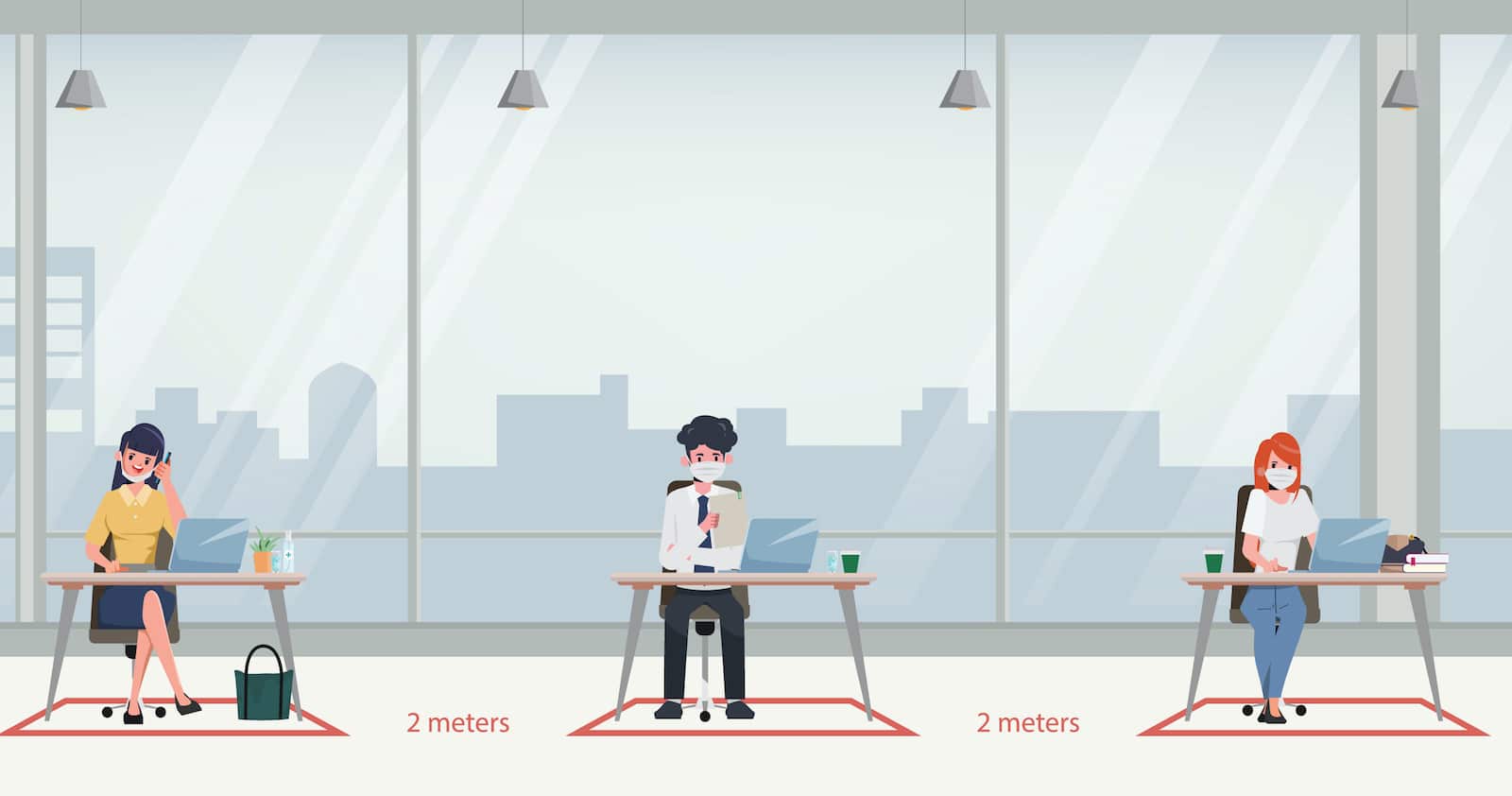Today, you don’t need occupancy analytics to know that your building is empty.
Currently, there are approximately three billion people under lockdown across the world and the key business hubs of Asia, Europe, and North America are at the center of the crisis. Despite a few comments from overly-optimistic world leaders, no one knows how long these measures will have to be in place as the global and national health authorities continue to assess the rapidly evolving situation.
Eventually, however, the political tug-of-war between health and economics will start to shift as the pressure of collapsing markets forces world leaders to ease lockdown measures, probably against the most prudent health advice. To avoid a second wave of coronavirus cases, politicians will push policies that maintain some form of social distancing while getting people back to work, targeting key industries and suggesting various measures to enable work while avoiding a further spread of the virus. At that point, Occupancy Analytics will provide smart buildings huge advantages over traditional buildings as facilities race to become re-operational as soon as possible.
Occupancy analytics has emerged with the smart building over the past decade driven by the use case of space utilisation. Optimising workplace floor space without impacting the health, comfort, or productivity of employees. By gathering data from sensors and other sources, occupancy analytics helps buildings understand the way occupants use different spaces in order to redesign the office for greater space efficiency. This has inevitably led to a growing trend of densification as commercial buildings around the world try to do more with less space.
“From 2009 to 2019, most companies have embraced office densification, consistently allocating less square footage per employee every year following the Recession. Office densities across the world have continued to increase as occupancy costs rise and flexible working allows a reduction in space per person,” explains our recent Occupancy Analytics Report. “With office densification rates increasing across the world, the balance between space reduction and occupants’ desire for more desk and shared space is tricky.”
The incredible and unforeseen way that 2020 has unfolded has abruptly disrupted this trend, sending occupancy rates down to zero in most commercial real estate. While offices are empty there is little that occupancy analytics can do, but as economics drive us back to our offices (maybe prematurely from a health perspective), occupancy analytics can make us safer. In a post-lockdown world, occupancy analytics still maximizes the number of people in a space without impacting health, comfort, or productivity, but health has a new metric — social distancing.
A post-lockdown occupancy analytics system will be focused on keeping us apart. By understanding the movement of people around a building, an occupancy analytics system can calculate the maximum number of people that should be in each area, sending alerts to building operators or occupants when a space nears its socially distance-based capacity. By tracking the movement of people in this new reality, the systems can gradually find more and more ways to introduce additional workers while maintaining the appropriate social distance.
“Navigating through the wealth of use cases in the smart building landscape is not easy. Although technology is evolving rapidly and offers a vast number of smart building solutions, there is no one path on how to transform an office into a more human-focused building. There is no predefined sequence of measures to be taken. The only right way is an individual customize,” explains our new report — Occupancy Analytics & In-Building Location-Based Services.

Indoor location-based platforms, which enable building managers to locate objects and people within buildings could be used to ensure people keep a safe distance from one another. Combined with navigation, scheduling, and analytics, indoor positioning systems can allow users to see and share their location in relation to workstations, meeting rooms or other occupants in real-time. While the range of workplace apps that have emerged in recent years can facilitate infection-risk free communication between all people in a building.
“Through the latest IoT technologies, our smart commercial buildings promise to improve the health, wellbeing, and safety of their occupants like never before. Yet, as Europe goes into lockdown, the majority of the continent’s commercial real-estate sits empty, offering few answers to the novel dangers brought up by the COVID-19 pandemic,” we wrote in a recent article titled COVID-19 Lockdown Leaves Empty Smart Buildings to Ponder their Failings. “While we can excuse the technology for being as unprepared as the humans who made it, this strange reality we find ourselves living in poses a new challenge for the smart building industry to adapt its intelligence to.”
Buildings are like a species that feeds off the activity that happens within its walls, over the last decade smart buildings have thrived by using various tools to increase productivity within the limits of occupant health and wellbeing. As lockdown measures eventually start to ease, our buildings will find themselves in a new environment, one with limits that seek to keep occupants apart, gradually allowing the chance of contact to increase in-line with government health policies as the coronavirus situation improves in cities and regions around the world.
“It is not the strongest of the species that survives, nor the most intelligent, it is the one that is most adaptable to change,” said Charles Darwin, father of evolutionary theory. It won’t be the "biggest" or the "smartest" buildings that survive the challenges ahead but the buildings that best adapt to the novel limits and opportunities in the post-lockdown environment. Of all the tools in the smart building toolbox, those that can offer the greatest insight into people and biology at the heart of this crisis will present the best solutions. Occupancy analytics and indoor location-based services will be a key platform for buildings adapting to the new reality.



